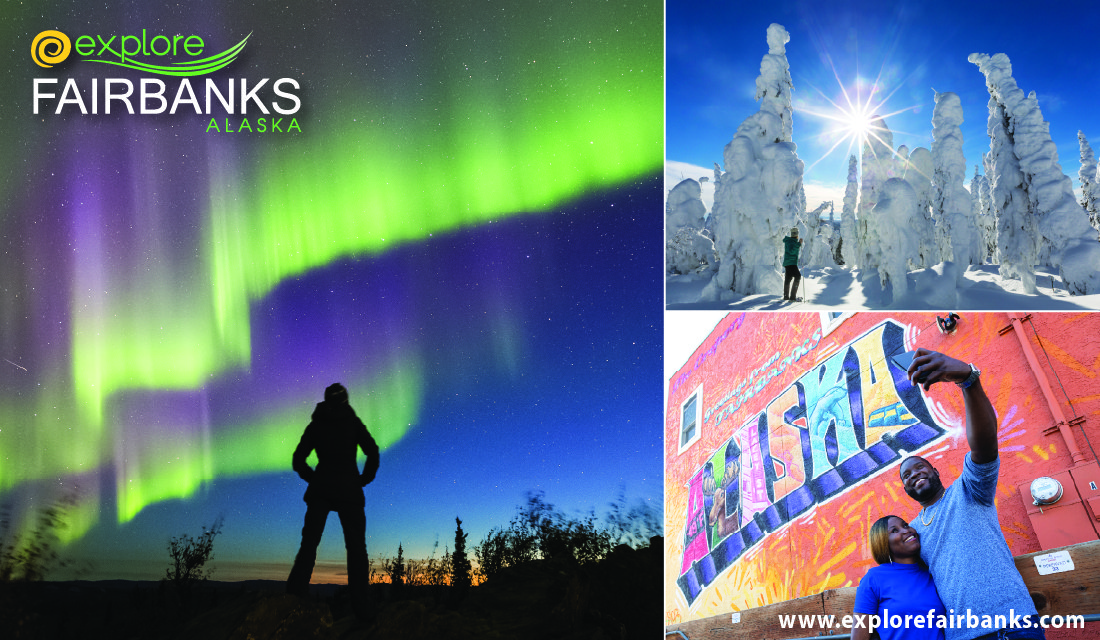The mountain doesn’t care about us. Huge, frozen and reaching into air too thin for human existence, Denali remains a hostile, immutable presence, with an allure climbers and other visitors find difficult to resist.
[by Seth Adams]
At 20,310 feet, Denali dominates the already monumental landscape of the Alaska Range, rising above the horizon of Alaska’s two largest cities, Fairbanks and Anchorage, population hubs separated by 300 miles—yet visible from both on a clear day. Even from those distant viewpoints, the mountain dominates the horizon. Up close, Denali dwarfs the next tallest peak, Mount Foraker, by half a mile, and has a vertical face stretching for two miles and dark crevasses whose yawning depths appear bottomless.
Formerly known as Mount McKinley, the mountain officially regained its oldest moniker, Denali, last summer at the request of President Obama and to the applause of many Alaskans, who had long referred to it as Denali anyway. In Koyukon Athabascan, the word Denali means “the tall one”—though according to a new GPS assessment, the aptly named mountain just got a little shorter. Precise measurements now put Denali’s summit at 20,310 feet, a height 10 feet lower than last recorded.
As the highest peak on the continent, Denali attracted climbers seeking to conquer it and developed a rich and storied history of notable ascents. In fact, it’s hard to say much about Denali without talking about its climbing heritage. The “Sourdough Expedition,” the first successful bid to scale Denali, carried a 14-foot spruce pole to the summit, with the naïve belief that it would be visible from Fairbanks. However, the team only climbed the north summit, which they mistakenly believed to be higher than the south summit. Hudson Stuck and Harry Karstens led the true first ascent of Denali, in 1913.

The first ascent, however, gave others the confidence to pursue their dreams of standing on the summit, leading to more attempts. Stories about the various ensuing routes fill volumes.
Though the Muldrow Glacier, the route the Sourdough and Stuck expeditions climbed, is still viable, climbers must hike 29 miles from Wonder Lake to arrive at Denali’s base, with all their gear and provisions. It remains an arduous and daunting journey simply to reach the starting point of the ascent. The most popular route now, the West Buttress, begins from deep in the mountains—a place inaccessible at the time of the early ascents and later made possible by the evolution of aviation.
The West Buttress was first climbed in 1951 by the legendary Alaska mountain explorer Bradford Washburn. A Massachusetts-based cartographer with an obsessive desire to explore northern peaks, Washburn died in 2007 at the age of 96. Though he climbed a number of significant routes in Alaska, he was most famous for influencing other enthusiasts. The Alaska Range was largely unexplored in the 1950s, and few people had the resources to probe such a vast area looking for climbing objectives. Washburn took extensive aerial photographs, and his partnership with bush pilot Don Sheldon made Sheldon synonymous with mountain flying in Alaska. It was exploration and photography, not climbing, that carved out Washburn’s niche as one of the great forces in Alaska’s mountaineering history.

The 1961 ascent of the Cassin Ridge was likely one of the hardest alpine endeavors ever. Denali’s 9,000-foot-tall south face is split by a single ridge. In 1956, Washburn published a photo of the enormous ridge in the magazine The Mountain World, enticing climbers worldwide. He promised exceptional climbing throughout. Five years later, an Italian team led by Ricardo Cassin accepted the challenge.
They were successful. But if mountains are a metaphor for human ambition, the mighty toll Denali took on the aspirants is a continuation of that metaphor. They were unprepared for the bitter cold, and though they all survived the month-long ascent, they emerged starving and weak, and several members suffered severe frostbite.
Even now, the Cassin Ridge represents a benchmark in Alaska Range mountaineering, and it still sees relatively few attempts compared to the nearby West Buttress.
Today, so many routes have been established on Denali that only extremely difficult or dangerous options remain untouched. Much of the climbing action is in the form of “refinement ascents,” such as the first woman, first winter ascent, first solo ascent and so on.
While trying a new route on Denali remains cutting edge, following its common passages is no longer considered extreme. Each year over 1,000 people scale Denali, most via the West Buttress. Nearly everyone who ventures up Denali passes through Kahiltna Basecamp, named for its location on Kahiltna Glacier. Players run the gamut of climbing society—from amateurs seeking accomplishment to highly skilled veterans focused on the mountain’s most challenging routes. And the Kahiltna Basecamp is not just basecamp for Denali; those headed to Mount Foraker or Mount Hunter also begin there.

So many people occupying the area create sanitation problems. Carrying garbage off site is a given, but dealing with human waste is more complicated.
“It doesn’t take too much noncompliance to make a big, unsightly and unsanitary mess,” Coley Gentzel, the lead mountaineering ranger for Denali National Park, says about the rules regarding human waste disposal. The rangers maintain a variety of official duties on and off the mountain, from the mundane, such as answering questions about the weather and cleaning up trash, to the harrowing and tragic, such as rescues and the unfortunate reality of body recoveries.
“For the busier places in the range we ask that people use the Clean Mountain Can,” says Gentzel of on-mountain sanitation. The CMC is a closable container that doubles as a toilet. “Crevassing it is also acceptable and we offer the guideline that they pick a deep dark crevasse where the poop bag will never be seen again. On technical routes we ask climbers to toss it off the route and again make efforts to ensure that it will never be seen again.”
Crevasses are deep, naturally occurring fissures in the glacier. Though the glaciers flow out to low elevation where they eventually melt, this occurs on a geologic timescale. The years and the exceptional forces at play ensure that the bags of waste will be long gone before they melt out.
“The biggest problem area for compliance is on the upper mountain, because people are so taxed at altitude, they don’t want to carry any ‘extra’ weight. Unfortunately this is also the most critical area to manage waste effectively because there isn’t much snow for drinking water at the higher elevations. (Loose snow is often blown away by the regular high winds.) Our policy now is that if you wind up at high camp without your CMC, your permit is canceled and you cannot continue your climb.”

With the allure of the world’s high places pulling so strongly, many climbers enlist the help of experienced veterans to assist them in getting to the top. As such, guiding is big business on Denali.
According to Denali park officials, the first successful guided trip on Denali was in 1969, led by Ray Genet. Approximately half of climbers hire guides—a dramatically increasing trend in recent years. For example, in 2000, only 27 percent of climbers enlisted a guide service, with the numbers showing a steady increase to 49 percent in 2015.


